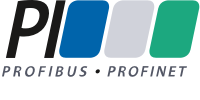Project
ITC (Imperial Tufting Company) in Tielt, Belgium is part of the Balta Group, one of the leading manufacturers of floor coverings worldwide. ITC specializes in tufted and printed polyamide wall-to-wall carpeting. With almost 700 employees, ITC produces 27 million m² of carpeting per annum.
Water is one of its most important raw materials as the company uses it for the manufacture of powder-based paint. Water is extracted from 28 wells distributed throughout the company. Previously, these were controlled by a 25 year old central control unit, which used masses of cables and did not comply with current standards. ITC therefore set about looking for a new partner to supply a modern PLC-based system.
Solution
ITC decided to completely renew the operation of its water extraction activities and choosed Phoenix Contact to supply the control units and decentralized modules that control various wells and pumps. The exchange of data between the modules and the PLC are done via PROFINET using an existing Ethernet infrastructure.  Water extraction at ITC is now controlled by an ILC 350 from Phoenix Contact, with twelve slaves keeping track of and operating a number of wells each. The slaves exchange I/O data via PROFINET with the master PLC, which activates pumps on the basis of input signals such as low buffer tank water levels, a lost signal, a sudden drop in pressure in the duct and various other alarm conditions.
Water extraction at ITC is now controlled by an ILC 350 from Phoenix Contact, with twelve slaves keeping track of and operating a number of wells each. The slaves exchange I/O data via PROFINET with the master PLC, which activates pumps on the basis of input signals such as low buffer tank water levels, a lost signal, a sudden drop in pressure in the duct and various other alarm conditions.
With the Phoenix Contact system, a malfunction is detected immediately by a reader in a slave and directly signaled through to the central control unit, which then alerts intervention teams by sending out e-mails and SMS messages.
Günther Bonte, head of the Electrical Department at ITC, said: 'In the factory, we have a classic Ethernet network running between the various offices, distributed throughout the entire factory site. We use that network for our office applications. A few years ago, we replaced all our office hubs with Ethernet switches and optical fiber. Therefore, switches were already available in the vicinity of all wells. The connection of a short cable between the switch and the I/O port was all that was necessary”.  Conclusion
Conclusion
Günther Bonte continues: “Thanks to PROFINET, we have been able to reap the benefits of our earlier investment in these switches. We did consider facilitating communications between the PLCs using classic Ethernet. However that was more complex to program. PROFINET is easier to integrate given that the ILC control unit from Phoenix Contact has a direct PROFINET connection. We are not using the full real time potential of PROFINET but the benefits have been worthwhile nevertheless”.


